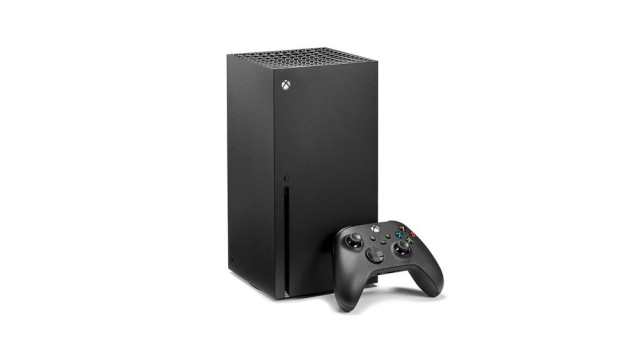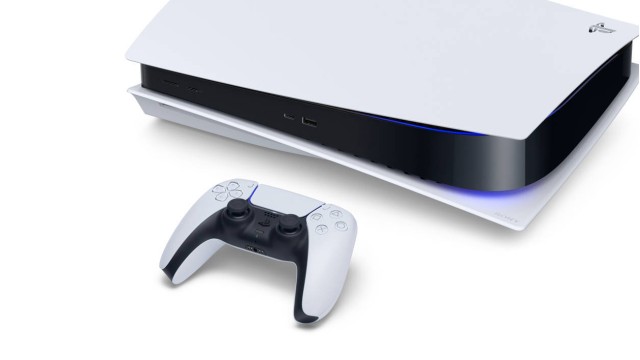
Xbox Series X/S
Launches: 2020
Generation: 9th
 Xbox Series X/S technical specifications
Xbox Series X/S technical specifications
CPU: Custom AMD 8-core Zen 2;
Memory: 16 GB
 Xbox Series X/S video specifications
Xbox Series X/S video specifications
Xbox Series X/S graphics capabilities.
Video chip: Custom AMD Radeon RDNA 2
Video connection:
 Xbox Series X/S audio specifications
Xbox Series X/S audio specifications
Xbox Series X/S sound capabilities.
Audio chip: Custom Project Acoustics 3D Audio
Audio mode:
 Controllers of Xbox Series X/S
Controllers of Xbox Series X/S
 Xbox Series X/S games support
Xbox Series X/S games support
Support:
Xbox Series X/S games
Games library:
Xbox Series X/S story
The Xbox Series X and Xbox Series S, collectively referred to as the Xbox Series, represent Microsoft's latest leap in home gaming technology, marking the culmination of several years of development and strategic planning. The launch of these consoles in November 2020 was a significant moment in the gaming industry, reflecting Microsoft's commitment to advancing gaming experiences and expanding its ecosystem.
The creation of the Xbox Series X and Series S was rooted in Microsoft’s strategic vision to redefine console gaming with powerful hardware and enhanced performance. Following the mixed reception of the Xbox One, Microsoft sought to address both the technological demands of modern gamers and the evolving landscape of gaming services. The company's approach focused on building a new generation of consoles that would cater to diverse gaming needs while integrating seamlessly with its broader ecosystem, including cloud gaming and subscription services.
The development of the Xbox Series X and Series S involved significant advancements in hardware and design. The Xbox Series X, marketed as the more powerful of the two, was designed to be a high-performance console with a focus on delivering 4K gaming at up to 120 frames per second. It features a custom AMD Zen 2-based processor and RDNA 2 GPU architecture, which collectively enable enhanced graphics, faster load times, and support for advanced technologies such as ray tracing. The console also includes a 1TB NVMe SSD, which provides a substantial improvement in speed and storage compared to previous generations.
The Xbox Series S, on the other hand, was developed as a more affordable option with a focus on performance at a lower resolution. It features similar core technologies but with less emphasis on 4K capabilities, instead targeting 1440p resolution and offering a more compact form factor.
Both consoles share a common architecture, which allows for seamless integration within the Xbox ecosystem and ensures compatibility with a wide range of games and services.
The development process also placed a significant emphasis on backward compatibility and game preservation. Microsoft aimed to provide a console that could play games from previous Xbox generations, allowing gamers to continue enjoying their existing library of titles. This backward compatibility was complemented by the inclusion of the Smart Delivery system, which ensures that players receive the best version of a game for their specific console, whether they upgrade from the Xbox One or another system.
The launch of the Xbox Series X and Series S was a highly anticipated event in November 2020. The release strategy was designed to cater to different segments of the gaming market. The Xbox Series X, with its high-end specifications, targeted enthusiasts and gamers seeking the most advanced gaming experience. In contrast, the Xbox Series S was aimed at budget-conscious consumers who still wanted to experience next-generation gaming without the higher price tag. The launch was supported by a strong lineup of games and services, including titles optimized for the new hardware and enhanced features like Quick Resume, which allows players to switch between multiple games with minimal loading times.
The market reception of the Xbox Series X and Series S was generally positive, reflecting the anticipation and excitement surrounding their release. The Xbox Series X was praised for its impressive hardware performance, fast load times, and robust backward compatibility. Critics and gamers alike acknowledged the console’s ability to deliver high-quality graphics and a smooth gaming experience. The Series X’s design, with its distinctive tower-like form factor, was noted for its efficient cooling and quiet operation, enhancing the overall gaming experience.
The Xbox Series S also received favorable reviews for its affordability and compact design. While it offered less graphical power compared to the Series X, it provided a compelling entry point into the next generation of gaming for those who were looking for a cost-effective option. The Series S’s performance was considered impressive given its lower price, making it an attractive choice for gamers who wanted to experience new features and technology without making a substantial financial investment.
One of the key factors contributing to the Xbox Series’ market reception was Microsoft’s broader strategy to integrate its gaming ecosystem. The consoles were closely tied to services such as Xbox Game Pass, which offered access to a large library of games for a monthly subscription fee. This service, along with the Xbox Live Gold subscription for online multiplayer, was positioned as a significant value proposition for gamers, further enhancing the appeal of the new consoles.
However, the launch also faced challenges, particularly related to supply chain issues and high demand. The COVID-19 pandemic impacted manufacturing and distribution, leading to shortages and difficulties in securing units for many consumers. Despite these challenges, both the Xbox Series X and Series S managed to capture a significant share of the market and generated considerable interest among gamers.
The Xbox Series X and Series S represent Microsoft’s ambitious efforts to advance gaming technology and expand its ecosystem. The consoles’ development was marked by a focus on performance, backward compatibility, and integration with gaming services. Their launch was met with enthusiasm, reflecting the strong anticipation for next-generation gaming experiences. Despite some challenges, the Xbox Series has established itself as a key player in the current gaming landscape, highlighting Microsoft’s ongoing commitment to innovation and gamer satisfaction.
Previous Microsoft console: Xbox One
